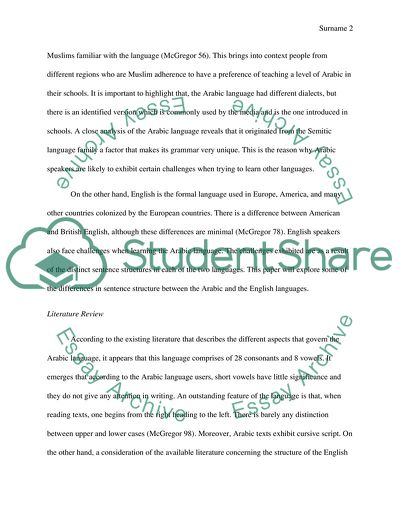Cite this document
(“Comparison of Sentence Structures between Arabic and English Languages Research Paper”, n.d.)
Comparison of Sentence Structures between Arabic and English Languages Research Paper. Retrieved from https://studentshare.org/english/1828896-sentence-construction-arabic-and-english
Comparison of Sentence Structures between Arabic and English Languages Research Paper. Retrieved from https://studentshare.org/english/1828896-sentence-construction-arabic-and-english
(Comparison of Sentence Structures Between Arabic and English Languages Research Paper)
Comparison of Sentence Structures Between Arabic and English Languages Research Paper. https://studentshare.org/english/1828896-sentence-construction-arabic-and-english.
Comparison of Sentence Structures Between Arabic and English Languages Research Paper. https://studentshare.org/english/1828896-sentence-construction-arabic-and-english.
“Comparison of Sentence Structures Between Arabic and English Languages Research Paper”, n.d. https://studentshare.org/english/1828896-sentence-construction-arabic-and-english.


